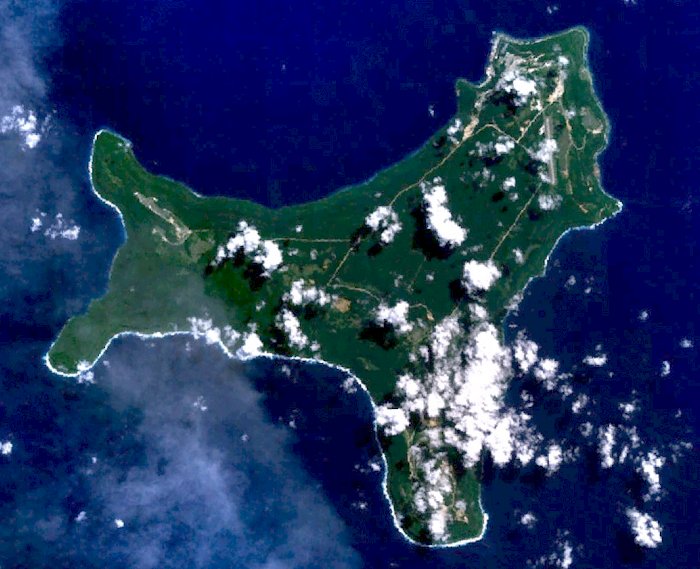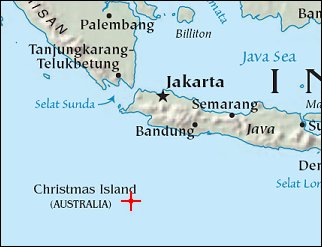| Earth from Space is a free eBook describing our planet from a satellite's perspective. Fore more information, please read the About pages. |

|

Home  Australia and Oceania Australia and Oceania  Australia Australia  Christmas Island Christmas Island |
|
| See also: Kiritimati (Christmas Island), Vanatinai | |






|
|
Christmas IslandPosition of center of photo (Lat/Long): [-10.48554/105.64580] |
|
  The Territory of Christmas Island is a small (135 kmē) territory of Australia located in the Indian Ocean, 2360 km northwest of Perth in Western Australia and 500 km south of Jakarta, Indonesia. It maintains about 1500 residents who live in a number of towns on the northern tip of the island: Settlement, Silver City, Kampong, Poon Saan, and Drumsite. It has a unique natural topography and is of immense interest to scientists and naturalists due to the number of species of endemic flora and fauna which have evolved in isolation and undisturbed by human habitation. While there has been mining activity on the island for many years, 65 percent of its surface are now National Park and there are large areas of pristine and ancient rainforest. The Territory of Christmas Island is a small (135 kmē) territory of Australia located in the Indian Ocean, 2360 km northwest of Perth in Western Australia and 500 km south of Jakarta, Indonesia. It maintains about 1500 residents who live in a number of towns on the northern tip of the island: Settlement, Silver City, Kampong, Poon Saan, and Drumsite. It has a unique natural topography and is of immense interest to scientists and naturalists due to the number of species of endemic flora and fauna which have evolved in isolation and undisturbed by human habitation. While there has been mining activity on the island for many years, 65 percent of its surface are now National Park and there are large areas of pristine and ancient rainforest.
The climate is tropical, with heat and humidity moderated by trade winds. Steep cliffs along much of the coast rise abruptly to a central plateau. Elevation ranges from sea level to 361 m at Murray Hill. Christmas Island is of immense scientific value as it was uninhabited until the late 19th century, so many unique species of fauna and flora exist which have evolved independently of human interference. Among the best-known is the Christmas Island red crab, which numbered some 100 million on the island as of 2004. The annual red crab mass migration to the sea to spawn takes place each year around November; after the start of the wet season and in synchronisation with the cycle of the moon. The dense rainforest has evolved in the deep soils of the plateau and on the terraces. The forests are dominated by 25 tree species. Ferns, orchids & vines grow on the branches in the humid atmosphere beneath the canopy. The 135 plant species include 16 which are only found on Christmas Island.
|
| Source of material: NASA and Wikipedia |
Further information: WikiPedia article on Christmas Island
Last Update: 2011-03-30

